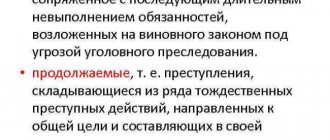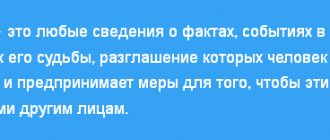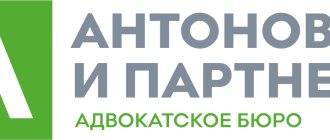The foreign word “brand” appeared relatively recently. It doesn’t occur to everyone that a brand or trademark belongs to someone and you can’t just pick it up and start using it at your own discretion. There is responsibility for this.
ATTENTION : our lawyer will help with illegal use of a trademark, read more about the issue of protecting exclusive rights to a trademark by following the link.
Types of illegal use of a trademark
Illegal use of a trademark may include the following:
- Use without permission of the trademark owner to popularize a product, use promotions, in documents, etc.
- Use of a trademark that is similar to a trademark that is registered and used in a particular brand, i.e. dilution of a trademark
- Selling products under someone else's trademarks without permission
Thus, a trademark can be used illegally using several types. Whatever type of use is applied by a person, if the requirements of the law are not met, according to which a trademark can be used subject to certain procedures, the use of the trademark is illegal, which in turn entails some kind of liability for the person.
Which trademarks are subject to Russian legislation?
The law prohibits the use of logos for which copyright was obtained in Russia.
It is illegal to use a third-party trademark in advertising without permission. This type of use of the logo must be established by agreement of the parties.
Also, mentioning someone else’s trademark in an article or interview will not be a violation of exclusive copyright. This provision is enshrined in Article 1487 of the Civil Code of the Russian Federation.
How to prosecute for illegal use of a trademark?
In order to be held accountable for the fact that a person has illegally used a trademark, the copyright holder can file an application with government agencies to protect his rights. The application can be submitted to the police, the customs authority, the antimonopoly authority, or Rospotrebnadzor. The copyright holder can also file a lawsuit in court.
Where to file an application depends on the specific circumstances of the illegal use of a trademark, what goal the copyright holder is pursuing and what he wants to get as a result.
If the copyright holder wants to bring a person to criminal liability, accordingly, he files an application to initiate a criminal case and bring him to this type of liability.
If the copyright holder wants to bring the violator to administrative responsibility, he submits an application to the relevant authorities.
To bring to civil liability and recover funds, it will be necessary to contact the judicial authorities.
How to prove illegal use of a trademark?
Proving illegal use of a trademark will depend on the type of illegal use of the trademark.
If a trademark is illegally used on some goods, promotions, etc., then a test purchase can be made, a video recording can be made, etc.
If a trademark is used that is similar to a branded trademark, then it will be necessary to prove the similarity of these trademarks, which will most likely require an examination.
The fact that a trademark is used without permission should not be difficult to prove at all, since the violator will not be able to provide permission to use the trademark and, accordingly, the legality of use will not be proven.
general information
A trademark is, in the full sense of the word, the property of the company.
It allows you to get additional profit and other advantages when competing with other enterprises.
Ultimately, a huge amount of resources are invested in the development of a trademark.
Like any property, a trademark is protected by current legislation . This means there is also liability for using a trademark without permission.
Legal protection is very necessary, since it is not uncommon for unscrupulous companies or individuals to try to cheat in order to benefit.
What is the use of someone else's trademark and responsibility for it? Several of the most common cases include illegal use of TK .
First of all, we are, of course, talking about mixing. If the visual images have a strong similarity, and the similarity was achieved deliberately, then this could potentially form the basis for legal proceedings.
To substantiate the claim, you will have to prove that the mixing caused losses or led to lost profits. The second extremely common type of illegal use is direct counterfeiting of a trademark. The criminal deliberately copies the registered technical specification.
The third case is the use of a similar image in advertising campaigns.
Proving trademark misuse begins with data collection . Companies often monitor the market on their own and watch for cases of misuse.
After discovering a violation, the company should contact the FAS (Federal Antimonopoly Service) or the department of internal affairs and begin preparing for legal proceedings.
Legal support can be provided by the company’s legal department (if there is one) or you can resort to the help of law firms specializing in such cases.
Sample claim for illegal use of a trademark
Illegal registration of a trademark
What is meant by illegal registration of a trademark, how is this possible? In general, registration of a trademark is carried out with the aim that the corresponding trademark is not used illegally by other persons.
Illegal registration can probably be understood as cases when a person submits documents to register a trademark that does not belong to him.
Registration of a trademark that is similar to another already registered trademark may be considered illegal.
It is possible to challenge the registration of a trademark that uses generally accepted designations and words; if the designation misleads consumers, does not comply with the principles of humanity and morality, etc.
That is, the illegal registration of a trademark lies more in the illegality of the actions of the person who applied for registration of the trademark, violating certain requirements for trademarks.
The procedure for its legalization
You need to start by developing a sketch. Then you should contact the Federal Patent Office - Rospatent, collecting the entire package of documents:
- Application for registration;
- Sketches;
- A list of goods, generated in accordance with the International Classification of Standards, which will be labeled with this brand;
- Brand designation on paper;
- Receipt for payment of state duty.
The issued certificate is the result of state registration, as well as the basis for protection against unfair competition. The certificate is valid for 10 years and can be extended upon expiration.
Claim for illegal use of a trademark
A claim regarding the illegal use of a trademark is no different from preparing other claims. When preparing this document, you should indicate the following information:
- to whom is the complaint addressed?
- who makes the claim
- title of the document – claim for illegal use of a trademark
- the text of the claim sets out the circumstances of the case in connection with which the applicant is sending the claim, what constitutes the illegality of using the trademark
- the operative part of the claim indicates the applicant’s demands, for example, to stop the illegal use of the trademark
- if there is any written evidence, they can be attached to the claim in copies and listed in the appendix
- at the end the claim must be signed by the applicant
You can make a claim by directly transferring it to a person under a mark on your copy who is illegally using the trademark.
You can also send a claim by registered mail with notification and track its receipt by the addressee.
You can duplicate a claim by e-mail, but you should not use this method of sending a claim yourself without other means, since the possibility of exchanging documents by e-mail must be indicated in some document between the parties. In this situation, when a trademark is used illegally by a person, there will most likely be no contractual relationship on this issue between the applicant and the infringer.
Claim for illegal use of brand name
In the hands of the copyright holder of a trademark or logo are articles of the Civil Code of the Russian Federation numbered 1484 and 1515. Article 1484 establishes the exclusive right to a trademark, paragraph 2 notifies of the right to place a trademark on the Internet, including in a domain name and other addressing methods.
Article 1515 provides for liability for illegal use of a trademark. Paragraph 3 states: “A person who has violated the exclusive right to a trademark when performing work or providing services is obliged to remove the trademark or a designation confusingly similar to it from the materials that accompany the performance of such work or provision of services, including from documentation , advertising, signs." A lot of companies and individuals, including those in the web space, can fall under this definition.
Liability arises in the event of a personal appeal by the copyright holder with a claim for illegal use of a trademark to the judicial authorities. As part of the claim, the copyright holder has the right to demand payment of compensation from 10,000 rubles to 5,000,000 rubles, based on the nature of the violation and proven damage.
Also, the copyright holder has the right to demand compensation in the amount of twice the cost of goods on which the trademark is illegally placed. Or you can demand to pay twice the value of the right to a trademark if it were used legally. In this case, you can “get” a fairly large sum of money and lose your professional reputation, or rather, completely ruin it. A claim for compensation for copyright infringement creates the need to contact our lawyer, while we help both on the side of the plaintiff and the defendant, who will prove the absence of infringement or reduce the compensation payment, watch the video with tips on filing a claim in court
HEALTHY:
Concept and legal characteristics
A trademark is a trademark, a brand, which is a name, symbol, sign or a combination thereof, which conveys to the consumer information about a product, its quality, values, etc. Currently, a brand is an effective way of advertising that supports a company. If a trademark is used illegally, the marketing and image of the organization will be harmed.
A product that was released under someone else's brand is counterfeit. There are currently quite a lot of cases of counterfeit products; illegal use of a trademark in clothing is popular.
The most obvious sign of using someone else's brand is the placement of an exact copy of the trademark on the product being sold. However, this is not the only option for violating the rights of the owner.
According to Art. 1484 of the Civil Code, violations of the exclusive right to a brand are:
- Using similar notation. For example, the Reebok brand is often replaced with Rebok, which can confuse consumers.
- Method of homogeneity of goods. This is how offenders create a product that looks identical to the brand in appearance, and in turn, buyers, when they see something similar to the brand name, buy it.
Administrative liability for trademark violation
One of the types of liability for trademark violation is administrative liability.
A person may be brought to this type of liability under one of the parts of Art. 14.10 Code of Administrative Offenses of the Russian Federation for the illegal use of means of individualization of goods, works, and services.
According to Part 1 of Art. 14.10 of the Code of Administrative Offenses of the Russian Federation, for illegal use of someone else’s trademark, a person will face a fine with confiscation of items with the corresponding trademark, as well as materials and equipment that are used for their production. The fines are as follows:
- for citizens - from 5 thousand rubles. up to 10 thousand rubles
- for officials - from 10 thousand rubles. up to 50 thousand rubles
- for legal entities from 50 thousand rubles. up to 200 thousand rubles
According to Part 2 of Art. 14.10 of the Code of Administrative Offenses of the Russian Federation, a person may be held liable in the case of production for sale or sale of goods that contain someone else’s trademark. In this case, the person faces a fine as under Part 1 with confiscation of items, materials, and equipment. The fine is imposed in the following amount:
- for citizens - twice the cost of the goods, but at least 10 thousand rubles.
- for officials - three times the cost of the goods, but at least 50 thousand rubles.
- for legal entities - five times the cost of the goods, but at least 100 thousand rubles.
Rules governing the issue
Several sections of Russian law regulate the issue of illegal use of a trademark. The degree of responsibility will depend on the qualifications of the case.
Responsibility for illegal use of a brand according to the Civil Code of the Russian Federation implies the right of the copyright holder to demand withdrawal from circulation of the product and destruction. In addition, packaging and labels are subject to seizure. This regulation is enshrined in Art. 1515 of the Civil Code of the Russian Federation.
The offense is also regulated by the Code of Administrative Offenses of the Russian Federation, Article 14.10. According to this article, the copyright holder can file a statement with the police to initiate a case. The liability of the violator according to the Code for legal entities ranges from 30 to 40 thousand rubles, and for an official from 10 to 20 thousand rubles. The statute of limitations for this violation is one year.
If a serious offense occurs, then legal proceedings are allowed within the framework of the Criminal Code of the Russian Federation, namely Article 180.
An offense will be considered criminal if the illegal use of the brand has occurred repeatedly or resulted in large losses. A major loss is considered to be damage in the amount of 250 thousand rubles.
Criminal liability for illegal use of someone else's trademark
If there is a criminal offense in the actions of persons for the illegal use of someone else's trademark, he faces liability under Art. 180 of the Criminal Code of the Russian Federation.
Liability arises in the event of repeated commission of relevant actions or causing major damage, i.e. in an amount exceeding 250 thousand rubles.
Sanctions parts of Art. 180 of the Criminal Code of the Russian Federation provides for different types of punishment, namely, in the form of a fine, compulsory labor, correctional labor, forced labor and imprisonment.
Let's consider the punishment under Part 1 of Art. 180 of the Criminal Code of the Russian Federation for the illegal use of someone else’s trademark. For this crime, a person may be sentenced to one of the following punishments:
- fine from 100 thousand rubles. up to 300 thousand rubles or in the amount of salary or other income for up to 2 years
- compulsory work up to 480 hours
- correctional labor for up to 2 years
- forced labor for up to 2 years
- imprisonment for up to 2 years with a fine of up to 80 thousand rubles. or in the amount of salary or other income for up to 6 months.
A person faces the most severe punishment under Part 4 of Art. 180 of the Criminal Code of the Russian Federation with the appointment of imprisonment for a term of up to 6 years with a fine of up to 500 thousand rubles. or in the amount of salary or other income for up to 3 years or without it.
Commentary to Art. 180 of the Criminal Code of the Russian Federation
This article provides for criminal liability for the commission of two acts that differ from each other only in the object of the attack.
The object of the crime provided for in Part 1 of Art. 180 of the Criminal Code of the Russian Federation, is the established procedure for using a trademark, service mark, appellation of origin of goods and similar designations for homogeneous goods, and the crime provided for in Part 2 of Art. 180 of the Criminal Code of the Russian Federation - the established procedure for the use of warning markings in relation to a trademark or appellation of origin of goods not registered in Russia.
The main normative act regulating in the Russian Federation the legal protection of the results of intellectual activity and equivalent means of individualization of goods, works, and services is the Civil Code of the Russian Federation.
Issues of legal protection of the exclusive rights of a citizen or legal entity are also regulated by the Convention for the Protection of Industrial Property (Paris, March 20, 1883), which classifies trademarks, service marks, trade names and indications of the place of origin of goods as objects of industrial property protection.
———————————
The Stockholm Act of the Paris Convention was signed on behalf of the USSR on October 12, 1967 and ratified by the Decree of the Presidium of the Supreme Soviet of the USSR dated September 19, 1968 // Gazette of the USSR Supreme Soviet. 1968. N 40. Art. 363.
According to Art. 1229 of the Civil Code of the Russian Federation, a citizen or legal entity that has an exclusive right to a result of intellectual activity or a means of individualization (right holder) has the right to use such a result or such a means at its own discretion in any way that does not contradict the law. The copyright holder may, at his own discretion, permit or prohibit other persons from using the result of intellectual activity or means of individualization. Using the result of intellectual activity or means of individualization without the consent of the copyright holder is illegal.
A trademark is a designation used to individualize goods, and a service mark is a designation intended to individualize the work performed by legal entities or individual entrepreneurs or the services they provide (Article 1477 of the Civil Code of the Russian Federation).
The owner of the exclusive right to a trademark and service mark can be a legal entity or an individual entrepreneur. This right must be registered by the federal executive body for intellectual property in the State Register of Trademarks and Service Marks of the Russian Federation in the manner established by the Civil Code of the Russian Federation (Articles 1503 - 1507). A certificate is issued for a registered trademark and service mark, which certifies their priority and exclusive right in relation to the goods and designations specified in the certificate.
Verbal, figurative, dimensional and other designations or combinations thereof, in any color or color combination, can be registered as trademarks.
The owner of a trademark and service mark can transfer the right to use these means of individualization on the basis of an agreement on the alienation of the exclusive right to a trademark (Article 1488 of the Civil Code of the Russian Federation) and a license agreement on granting the right to use a trademark (Article 1489 of the Civil Code of the Russian Federation), which must be registered with the federal executive body for intellectual property (Article 1490 of the Civil Code of the Russian Federation).
The appellation of origin of a product to which legal protection is granted is a designation that represents or contains a modern or historical, official or unofficial, full or abbreviated name of a country, urban or rural settlement, locality or other geographical feature, as well as a designation derived from such a name and which became known as a result of its use in relation to a product, the special properties of which are exclusively or mainly determined by the natural conditions and (or) human factors characteristic of a given geographical object (Article 1516 of the Civil Code of the Russian Federation). For example, “Essentuki”, “Gzhel”, “Khokhloma”, “Fedoskino”, “Tula gingerbread”.
The exclusive right to use the appellation of origin of goods on the territory of the Russian Federation is recognized and protected by virtue of state registration of such name and is certified by a certificate, provided that the goods produced by these persons have the specified special properties. The procedure for state registration of the appellation of origin of goods is regulated by the Civil Code of the Russian Federation (Articles 1522 - 1534). The name of the place of origin of the goods can be registered by one or more citizens or legal entities (paragraph 2, paragraph 1, article 1518 of the Civil Code of the Russian Federation).
In accordance with paragraph 4 of Art. 1519 of the Civil Code of the Russian Federation, disposal of the exclusive right to the appellation of origin of a product, including by alienating it or granting another person the right to use this name, is not allowed (except for the case specified in paragraph 2 of clause 2 of Article 1518 of the Civil Code of the Russian Federation).
The use of designations that are confusingly similar to means of individualization for homogeneous goods is not allowed (clauses 4 - 8 of Article 1483 and clause 3 of Article 1519 of the Civil Code of the Russian Federation). For example, Panasonix instead of Panasonic - for household appliances.
In accordance with paragraph 22 of the Resolution of the Plenum of the Supreme Court of the Russian Federation dated April 26, 2007 No. 14 “On the practice of courts considering criminal cases of violation of copyright, related, inventive and patent rights, as well as illegal use of a trademark,” similar ones should include identical designations (clause 9 of article 1483 of the Civil Code of the Russian Federation).
———————————
RG. 2007. May 5.
Products, labels, packaging of goods on which trademarks, designations, appellations of origin of goods or designations confusingly similar to them are illegally used are counterfeit.
Warning marking is a designation in the form of “R” or the Latin letter “R” in a circle (R), the verbal designation “trademark”, “registered trademark” or “registered appellation of origin”, “registered appellation of origin”, indicating registration in the Russian Federation of a trademark or appellation of origin of goods (Articles 1485 and 1520 of the Civil Code of the Russian Federation).
The objective side of the crime is expressed in the action: illegal use of someone else’s trademark, service mark, appellation of origin of goods or similar designations for homogeneous goods, warning markings in relation to a trademark or appellation of origin of goods not registered in Russia; subsequently in the form of major damage; in a causal connection or this act was committed repeatedly. The main issues related to the interpretation of the signs of the objective side and the qualification of the act are disclosed in the said Resolution of the Plenum of the Supreme Court of the Russian Federation dated April 26, 2007 No. 14:
a) a trademark (service mark) is considered alien if it is registered in the name of another person and is not assigned under an agreement in relation to all or part of the goods, or the right to use which is not granted by the owner of the trademark to another person under a license agreement (paragraph 3, paragraph 16 );
b) under the illegal use of someone else’s trademark, service mark or similar designations for homogeneous goods in relation to Part 1 of Art. 180 of the Criminal Code of the Russian Federation means the use of a trademark or a confusingly similar designation without the permission of the copyright holder of the specified means of individualization: 1) on goods, labels, packaging of these goods that are produced, offered for sale, sold, displayed at exhibitions and fairs or otherwise are introduced into civil circulation on the territory of the Russian Federation, or are stored and (or) transported for this purpose, or are imported into the territory of the Russian Federation; 2) when performing work or providing services; 3) on documentation related to the introduction of goods into civil circulation; in offers to sell goods; 4) on the Internet, in particular in a domain name and other addressing methods (clause 18);
c) the use of a registered appellation of origin of goods by a person who does not have a certificate should be recognized as illegal, even if the original place of origin of the goods is indicated or the name is used in translation or in combination with such expressions as “genus”, “type”, “imitation” etc., as well as the use of a similar designation for any goods that can mislead consumers regarding the place of origin and special properties of the goods (paragraph 2, paragraph 21);
d) illegal in relation to Part 2 of Art. 180 of the Criminal Code of the Russian Federation is the use of warning markings in relation to a trademark or place of origin of goods that are not registered in the Russian Federation (paragraph 3, paragraph 23);
e) criminal liability under Art. 180 of the Criminal Code of the Russian Federation for the illegal use of someone else’s trademark or other means of individualization occurs only in cases where this act was committed repeatedly or caused major damage.
Repeatability within the meaning of Part 1 of Art. 180 of the Criminal Code of the Russian Federation requires a person to commit two or more acts consisting of the illegal use of a trademark, service mark, appellation of origin of goods or similar designations for homogeneous goods. (In this case, there may be either repeated use of the same means of individualization of a product (service), or the simultaneous use of two or more foreign trademarks or other means of individualization on one unit of goods.)
In relation to Part 2 of Art. 180 of the Criminal Code of the Russian Federation recognizes the repeated commission of two or more times of illegal use of warning markings in relation to a trademark or appellation of origin of goods not registered in the Russian Federation (clause 15);
f) in accordance with the note to Art. 169 of the Criminal Code of the Russian Federation, damage caused by the acts specified in Art. 180 of the Criminal Code of the Russian Federation, is considered large if it exceeds two hundred and fifty thousand rubles (paragraph 2, paragraph 24);
g) when qualifying the actions of the perpetrators, the moral damage caused to the victim, including those associated with undermining his business reputation, should not be taken into account (paragraph 1, paragraph 28).
The corpus delicti is formal and material.
A continued act does not constitute repetition when the illegal use of means of individualization is covered by a single intent (for example, affixing someone else’s trademark on items included in one batch of production).
On the qualitative side, major damage most often results from lost profits to the owner of a trademark (service mark, appellation of origin of goods) due to the gratuitous use of his exclusive rights, as well as loss of the market for goods, work performed or services provided.
Damage is not caused to the victim when he demanded that the offender pay compensation instead of compensation for losses (clause 4 of Article 1515 and clause 2 of Article 1537 of the Civil Code of the Russian Federation).
A person who illegally used someone else’s trademark, service mark or name of place of origin of goods or similar designations for homogeneous goods, as well as illegally used warning markings, is subject to liability for a set of crimes provided for in Part 1 of Art. 180 and part 2 of Art. 180 of the Criminal Code of the Russian Federation.
An act associated with causing damage to a consumer due to misleading him regarding the consumer properties and quality of goods (services) must be qualified in conjunction with fraud (Article 159 of the Criminal Code of the Russian Federation).
On the totality of Art. 180 from Art. 171 of the Criminal Code of the Russian Federation, see commentary to Art. 171 of the Criminal Code of the Russian Federation.
The subjective side of the crime is characterized by guilt in the form of direct or indirect intent. The person realizes that he is illegally repeatedly using a trademark, service mark, appellation of origin of goods, similar designations for homogeneous goods, warning markings in relation to a trademark or appellation of origin of goods not registered in Russia, and wishes to do so. Given the materiality of this crime, the person foresees the possibility or inevitability of causing major damage to the copyright holder and desires this, or consciously allows these consequences or is indifferent to them.
Motive and purpose are irrelevant to qualification. However, as a rule, this act is committed with the aim of ruining the business reputation of the copyright holder, who may also be a competitor, causing him losses or obtaining property benefits for himself.
The general subject of the crime is a sane individual who has reached the age of sixteen years. They can be individuals, including those registered as individual entrepreneurs, or heads of organizations.
The qualifying feature of the act is the commission of a crime by a group of persons by prior conspiracy (see Part 2 of Article 35 of the Criminal Code of the Russian Federation and the commentary thereto) or by an organized group (see Part 3 of Article 35 of the Criminal Code of the Russian Federation and the commentary thereto).
For the illegal use of someone else's trademark, service mark, appellation of origin of goods or similar designations for homogeneous goods, administrative liability is also provided for (Article 14.10 of the Code of Administrative Offenses of the Russian Federation). Unlike criminal, administrative liability occurs in the absence of evidence of repetition and major damage caused to the copyright holder.
Attorney for trademarks, logos, brands in Yekaterinburg
Without fear, someone else's logo or trademark can be mentioned for commercial purposes or used only with the official permission of the copyright holder. To formalize such relations, with the help of our lawyer AB “Katsailidi and Partners”, an agreement on the temporary transfer of rights to a trademark is concluded.
After concluding this agreement, the protection of intellectual property on the Internet and beyond will be regulated in accordance with all the rules of the law.
Write questions, and also call us, ask about ways to protect the results of intellectual activity and you will receive professional advice from a lawyer.





